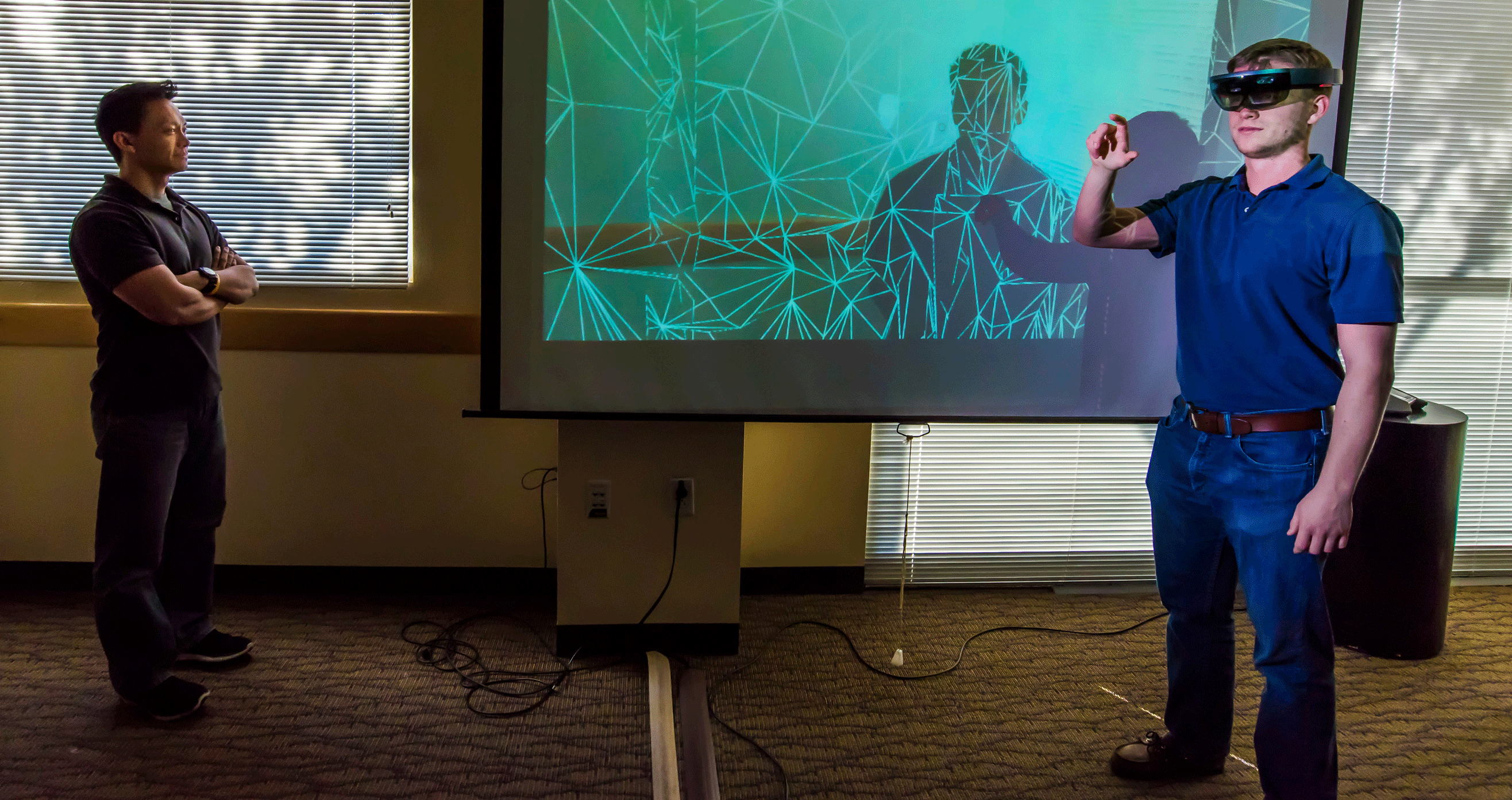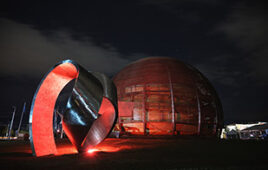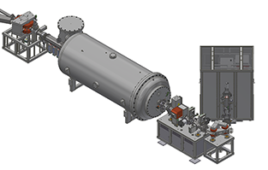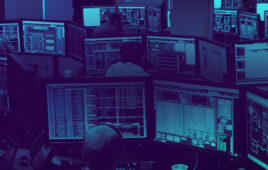
Tam Le, left, and Todd Noel use augmented reality headsets to help train physical security personnel from around the world. Photo by Randy Montoya, provided by Sandia National Laboratory
For most, augmented reality is a type of game—one where they can fight bad guys, fly spaceships, or catch Pokémon in a hybrid environment made up of both virtual and real-life elements.
But at Sandia National Laboratory augmented reality has a much bigger purpose—nuclear security.
Computer scientists Tam Le and Todd Noel have adapted augmented reality headsets—originally designed for gaming—as part of the physical security training curriculum Sandia provides in partnership with the International Atomic Energy Agency (IAEA) and National Nuclear Security Administration’s (NNSA) International Nuclear Security programs.
“This technology really enhances our mission, which is to increase and improve the international nuclear security training for those who deal with our nuclear stock piles and weapons and materials,” said Le in an exclusive interview with R&D Magazine. “It really does help to increase and improve this training in so many ways.”
Le and Noel have been incorporating augmented reality elements into Sandia’s nuclear training programs since March 2016. Most notably, they’ve updated the International Training Course on the Physical Protection of Nuclear Material and Nuclear Facilities (ITC), a three-week training session for nuclear materials and facilities professionals worldwide.
Trainings are held at Sandia’s Integrated Security Facility, which was originally designed to protect Category I nuclear material, but now serves as a venue for hands-on physical security training. The incorporation of the augmented reality headsets at the facility allows students to peer through walls and see all the processes needed to handle and protect nuclear material, without having to access actual hazardous material.
“It allows us to give the user a lot more information that is not normally possible with books and paper,” said Le. “These trainings deal with materials that are either dangerous or difficult to get your hands on. This allows us to do training that we never been able to do before, where the user is handling these types of materials and receiving information that they wouldn’t normally be able to do to easily and safely.”
The team also created a camera placement tool that lets users add virtual sensors and cameras, and then see what their fields of view would be in real time in the actual space. This is a very helpful tool for those training to learn how to set up cameras for physical protection in a nuclear facility, explained Le.
The augmented reality headsets also made it easier to gauge if students in the training are understanding and remembering the information they are being taught, said Le.
“It allows us this whole layer of being able to communicate and have students be able to show their ideas as well,” he said. “For a lot of the stuff we teach, you can’t measure these concepts with a grade on a test. The communication that comes out of this approach is a way more valuable way to be able to capture what the students learned.”
It didn’t require a significant investment in resources for Sandia to update its training program to incorporate augmented reality. The team uses the same software as small game development companies to develop many of their training and analysis tools without having to create everything from scratch.
So far, students that have undergone the course with augmented reality training have had positive feedback, said Le.
The team plan to incorporate even more augmented reality elements into their program in the coming year.
“We did the initial first look at it, but I think it is going to be applicable in a lot more of a training,” said Le. “There are a lot of areas that this can be very advantageous. It is really up to our imaginations. This type of technology really opens up the door for the types of training we can do.”




